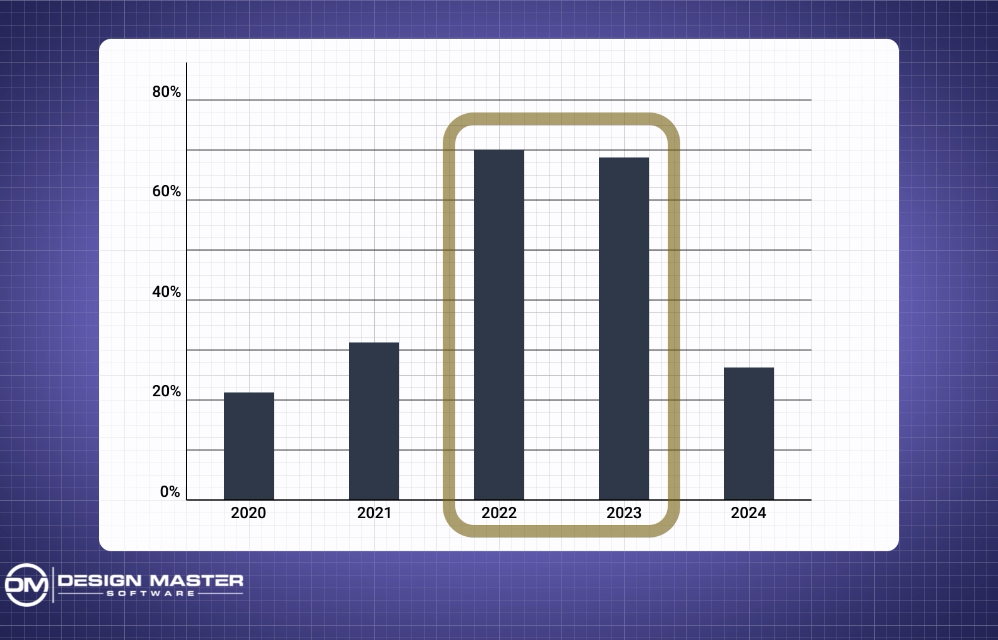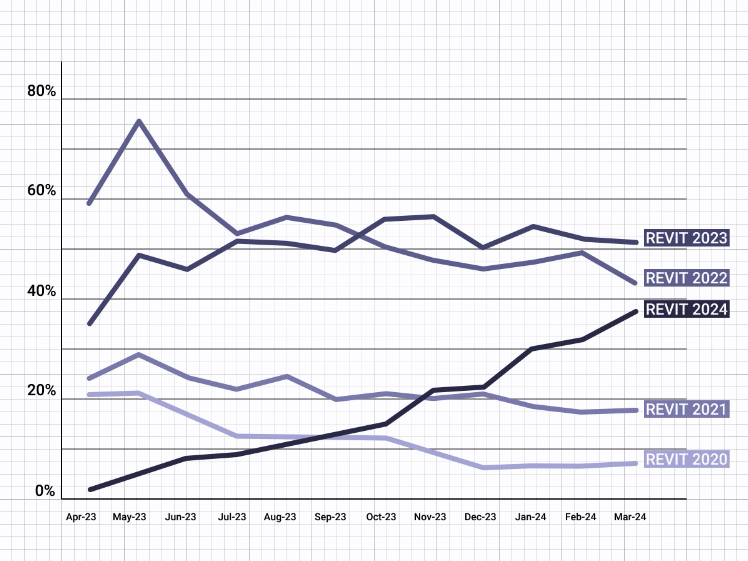Architectural and engineering software users are eager for the latest release of Revit 2025. However, before rushing into the features of Revit 2025, let’s take a step back and examine the patterns of Revit usage from the past year and focus instead on Revit 2024 and earlier versions.
Understanding Usage
Drawing insights from the usage statistics gathered from our specialized electrical add-in for Revit, ElectroBIM, we can gain a good understanding of the normal usage developments. Our tool, designed to facilitate tasks like single-line diagrams, serves as a reliable indicator of Revit’s adoption rates among professionals.
Revit User Statistics by Year
Over the past year, Revit 2022 and 2023 emerged as the dominant versions, collectively accounting for approximately 70% of projects. Their established reputation for reliability and functionality continues to attract users.

In contrast, Revit 2024 witnessed a gradual ascent since its release in April 2023, with roughly 40% of users now incorporating it into their workflows. This steady increase reflects growing familiarity and confidence in the capabilities of the latest iteration.
The usage of Revit 2021 and 2020 has steadily declined, highlighting the industry’s preference for newer versions. These legacy versions, while still in use, are gradually phasing out as professionals move to newer options.
Why Multiple Versions are Still in Use
Typically, when a project is started in a particular Revit version, that project remains in that version throughout its lifecycle. There is additional risk and complexity that comes from upgrading projects, especially those that are very complex. If a project was started in an older version like 2021, it may start to show its age and could benefit from an upgrade. Conversely, users of Revit 2024 may feel they are on the cutting edge with a feature-rich version.

What Can We Expect for Revit 2025
Looking ahead, it’s reasonable to expect a continuation of current trends in the coming year, and looking at 2024, it’s natural to assume that the same trend will continue with Revit 2025. Revit 2024 and 2023 are likely to become the current versions and preferred choices for ongoing projects, while early adopters will look to Revit 2025.
With Revit 2025 only just now released, adoption may be relatively slow at first. Now is a good time to seek out print and video reviews of the 2024 version to see what features are available there. On the electrical side, we have a video titled “Revit 2024: New Features for Electrical Engineers” that can be of help with your research.
Free Webinar
May 14, 2024 • 1:00 ET / 10:00 PT
“Create Single-Line Diagrams in Revit Without Late Nights or Change Orders”

